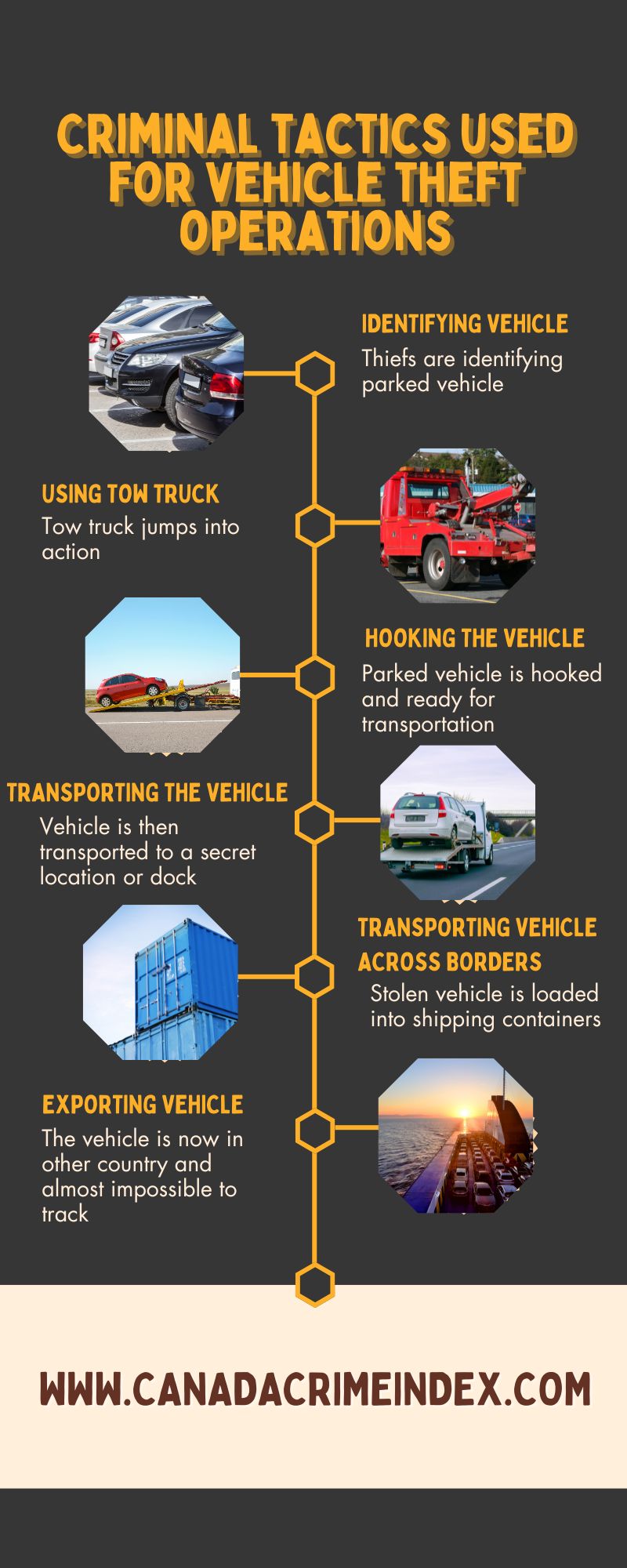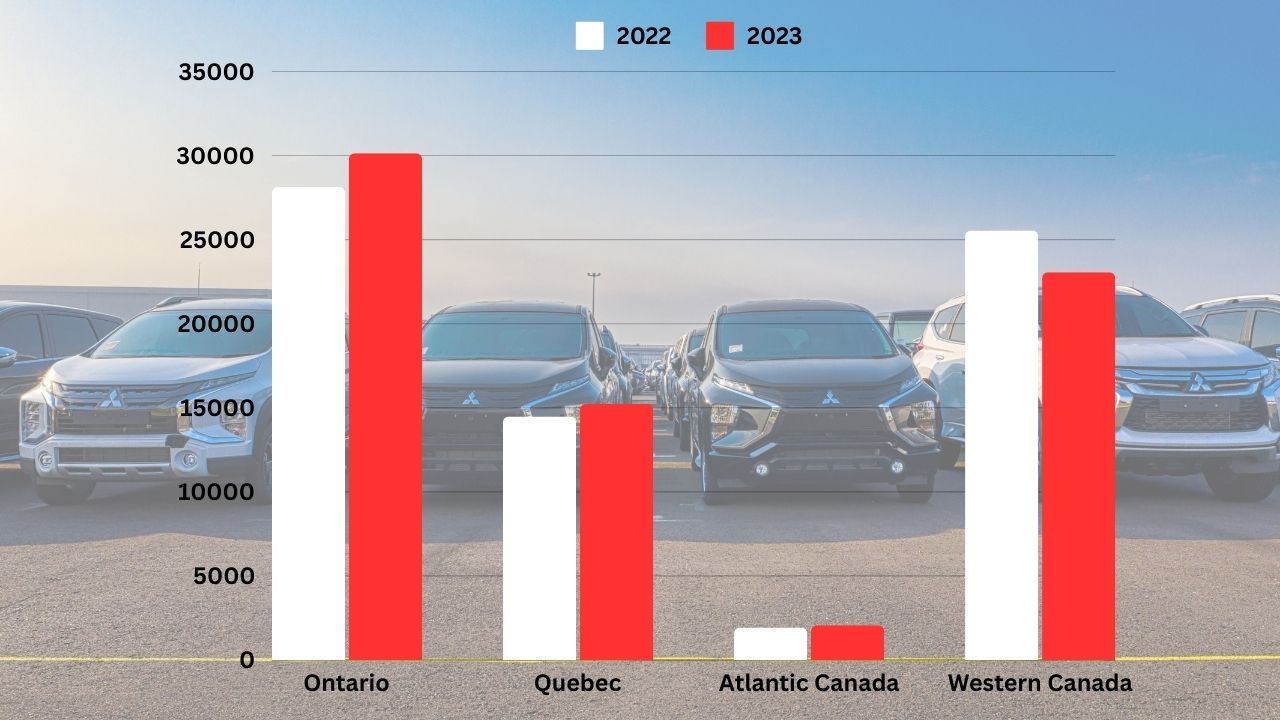In recent years, organized crime groups from Quebec and Ontario have expanded their vehicle theft operations into Western Canada, particularly in Alberta.
Despite Alberta having a smaller population compared to Quebec, vehicle theft rates in the province are now approaching similar levels.
According to GlobalNews.ca, the surge in thefts has created significant concerns about public safety and law enforcement’s ability to combat these sophisticated criminal activities.
Table of Contents
ToggleCriminal Tactics
One of the key tactics used by these organized crime groups involves the use of tow trucks to steal vehicles parked in public spaces.
Their modus operandi goes like this:
The stolen vehicle is loaded into shipping containers or onto cargo vessels for export overseas.
These vehicles are often sent to regions where demand for luxury cars or trucks is high, such as the Middle East, Africa, and parts of Europe.
By the time law enforcement in Canada realizes that the vehicle is stolen, it is often already on a ship or has arrived at its foreign destination.
This operation has become highly efficient, making it increasingly difficult for authorities to intervene before the vehicles leave Canadian soil.
Criminals can earn as much as $50,000 per shipment of stolen cars, making vehicle theft a highly lucrative endeavor.
The promise of such high profits has motivated organized crime groups to expand their operations, despite the increased risk of detection and prosecution.
Statistics and Notable Cases
These numbers highlight the scale of the problem, particularly in Alberta, where the population is much smaller than Quebec’s.
Law enforcement agencies have made several high-profile arrests in recent years, involving individuals from Quebec and Ontario who were caught stealing high-end trucks and exporting them to Montreal.
Organized Crime Networks
A recent report from the Criminal Intelligence Service Canada (CISC) has detailed the highly structured nature of the vehicle theft networks.
These operations consist of both lower-level and higher-level members, all with specific roles. Lower-level members, such as spotters, vehicle thieves, and drivers, are responsible for identifying and stealing vehicles, while higher-level members—facilitators, buyers, and exporters—manage the logistics and financial transactions involved in the export of stolen cars.
This hierarchical structure enables these criminal organizations to operate with precision and efficiency, making them difficult to dismantle. The networks are well-organized, and their operations are spread across multiple provinces, further complicating law enforcement efforts.
In one notable case, authorities recovered millions of dollars worth of stolen vehicles, underscoring the vast financial scale of these operations. Despite these arrests, vehicle theft remains a significant issue, with organized crime groups continuously adapting their tactics to evade law enforcement.
Challenges for Law Enforcement
A significant challenge for law enforcement is the involvement of repeat offenders in vehicle theft operations.
Many suspects, even after being arrested, are re-released on bail and continue to engage in criminal activities. This revolving door of arrests and releases complicates efforts to combat organized crime, as authorities are often dealing with the same individuals repeatedly.
The cross-provincial nature of these theft operations makes it difficult for local law enforcement agencies to track stolen vehicles and apprehend suspects before they can export the cars.
The coordination required between different law enforcement agencies across provinces is immense, further slowing down efforts to curb vehicle thefts.















